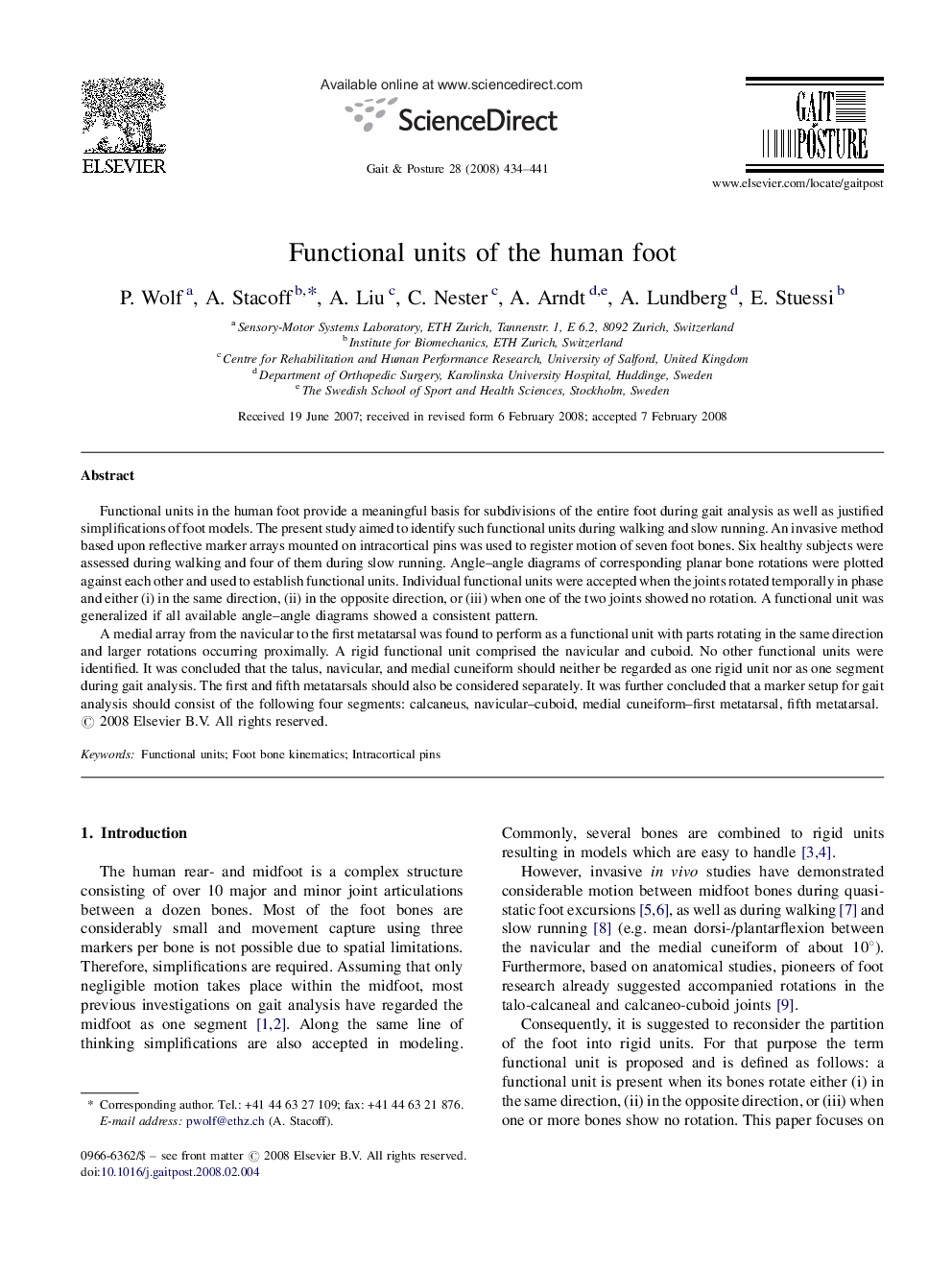| کد مقاله | کد نشریه | سال انتشار | مقاله انگلیسی | نسخه تمام متن |
|---|---|---|---|---|
| 4057404 | 1265694 | 2008 | 8 صفحه PDF | دانلود رایگان |

Functional units in the human foot provide a meaningful basis for subdivisions of the entire foot during gait analysis as well as justified simplifications of foot models. The present study aimed to identify such functional units during walking and slow running. An invasive method based upon reflective marker arrays mounted on intracortical pins was used to register motion of seven foot bones. Six healthy subjects were assessed during walking and four of them during slow running. Angle–angle diagrams of corresponding planar bone rotations were plotted against each other and used to establish functional units. Individual functional units were accepted when the joints rotated temporally in phase and either (i) in the same direction, (ii) in the opposite direction, or (iii) when one of the two joints showed no rotation. A functional unit was generalized if all available angle–angle diagrams showed a consistent pattern.A medial array from the navicular to the first metatarsal was found to perform as a functional unit with parts rotating in the same direction and larger rotations occurring proximally. A rigid functional unit comprised the navicular and cuboid. No other functional units were identified. It was concluded that the talus, navicular, and medial cuneiform should neither be regarded as one rigid unit nor as one segment during gait analysis. The first and fifth metatarsals should also be considered separately. It was further concluded that a marker setup for gait analysis should consist of the following four segments: calcaneus, navicular–cuboid, medial cuneiform–first metatarsal, fifth metatarsal.
Journal: Gait & Posture - Volume 28, Issue 3, October 2008, Pages 434–441